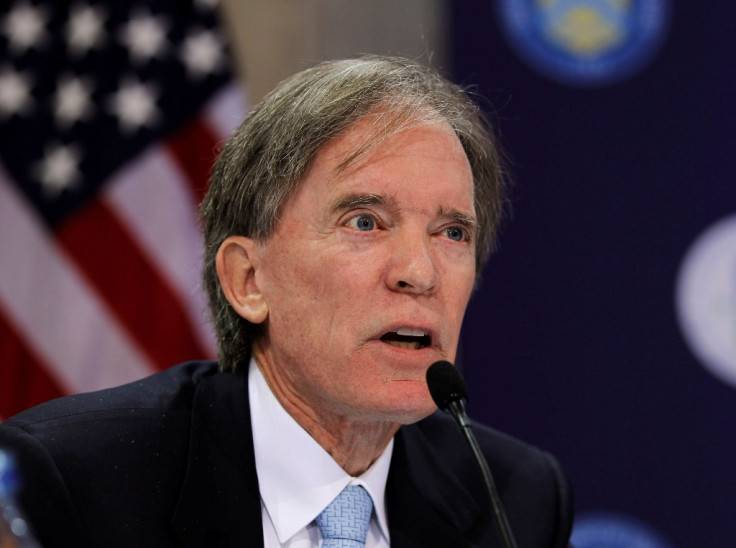Pimco's Total Return Fund Boosts US Government Holdings To 46%

Pacific Investment Management's Total Return Fund, the world's largest bond fund, increased its holdings of US government-related securities in January after the US bond market logged its best start to a year since 2008.
The proportion of securities in the $237bn (£144bn, €174bn) Total Return Fund was 46% in January, compared with 45% in December 2013, Pimco's website showed on 11 February.
It was the firm's biggest holding of US securities since July 2013, when it altered how it classifies assets.
The company's US credit category, which includes investment-grade and high-yield securities, dropped to 9%, from 10%. Holdings of money-market debt and cash-equivalent securities were negative 8% in January, as against negative 6% at the end of 2013.
Pimco's co-chief investment officer Bill Gross left holdings of emerging-market bonds unchanged at 6%. The fund raised non-US developed debt to 7%, from 6%, data showed.
The fund's asset allocation is important because Pimco, among the world's largest bond managers, manages assets worth some $1.92tr. The company is a unit of the Munich-based insurer Allianz.
"Pimco finds more solace at the front end of the curve," Gross told Bloomberg Television on 11 February, referring to three, four and five-year securities.
They are "a more stable bet going forward," he added.
US Economy
US Federal Reserve chief Janet Yellen said she expects a "great deal of continuity" in the Fed's approach to monetary policy that she helped organise under her ex-boss Ben Bernanke, which saw the introduction of forward guidance, low interest rates and quantitative easing on a massive scale.
Only a "notable change in the outlook" for the economy would prompt policy makers to slow the pace of tapering, Yellen said on 11 February in response to a question during her testimony to the House Financial Services Committee.
Inflation would head back to 2% over the coming years and recent volatility in the global financial markets would not be a risk to the outlook of the US economy, according to Yellen.
2014 Performance
The Total Return Fund gained 1.8% as of 7 February, beating 87% of peers. The fund last year lost investors 1.9%, the highest since 1994, and trailed 65% of its peers, reported Bloomberg.
The fund had estimated withdrawals of $3.5bn in January, research firm Morningstar said on 4 February. The fund had redemptions of $41.1bn in 2013, its worst year of net redemptions.
US Treasuries
The yield on the US Treasury's benchmark 10-year note fell to 2.57% on 3 February, the lowest since November 2013, as market players sought safety. The yield touched 3.05% on 2 January, the highest since July 2011, amid speculation the Fed would increase the pace of its QE taper.
Treasuries returned 1.6% in January, the best start to a year since advancing 2.5% in 2008, according to the Bank of America Merrill Lynch US Treasury index.
US government-debt securities rose this year after emerging-market equities dropped; and a slowdown in China and political unrest in some developing economies weighed down on local currencies.
The turbulence was also triggered by the Fed's stimulus taper. The world's most powerful central bank has in the past two months lowered its asset buying stimulus by $20bn, to $65bn a month, amid signals of economic growth.
The Total Return Fund's government and Treasury-debt category includes holdings of US Treasury notes, bonds, agency debt, interest-rate swaps and inflation-protected securities.
© Copyright IBTimes 2025. All rights reserved.






















